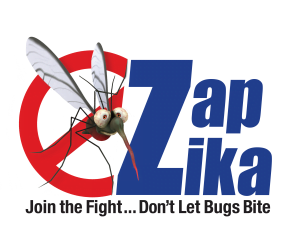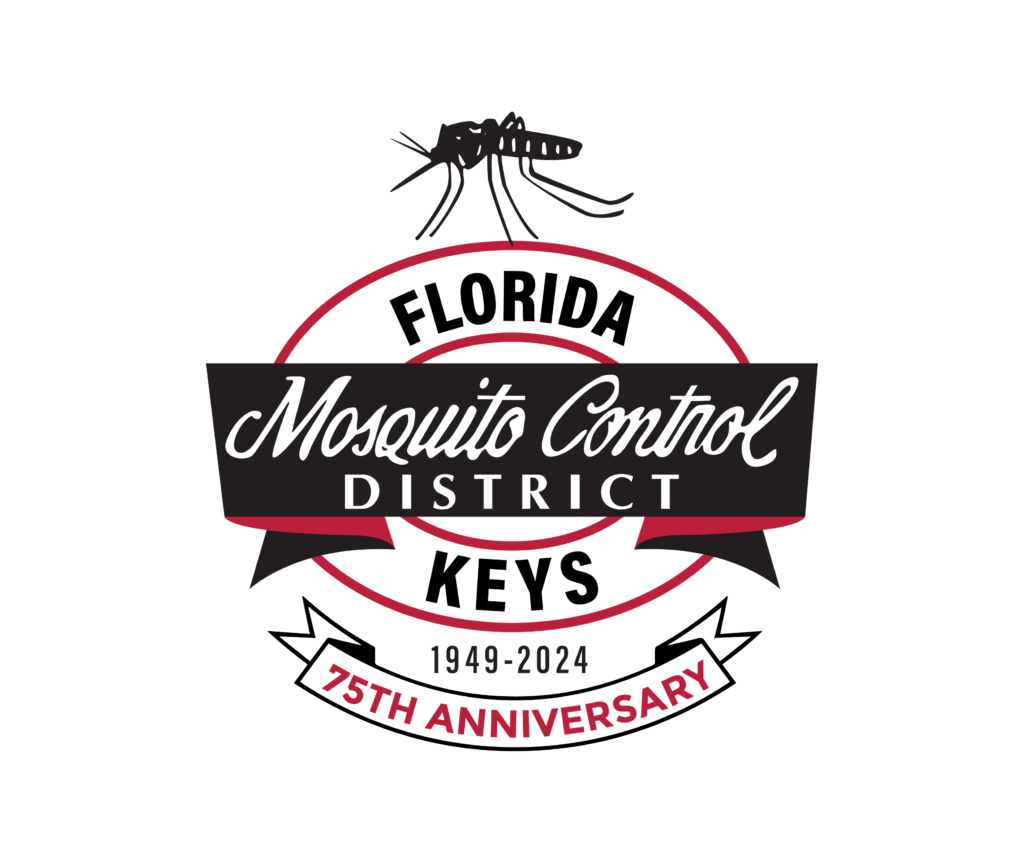
WELCOME TO THE FLORIDA KEYS MOSQUITO CONTROL DISTRICT
Mosquito-Borne Diseases

Dengue Fever
Frequently Asked Questions about Dengue:
What is Dengue Fever?
Dengue (pronounced den’ gee) is a disease caused by any one of four closely related dengue viruses (DENV 1, DENV 2, DENV 3, or DENV 4). The viruses are transmitted to humans by the bite of an infected Aedes aegypti mosquito. Symptoms have been described as flu-like without the respiratory problems and include a high fever lasting 5-7 days, body aches, pain behind the eyes, rash, nausea or vomiting. All of the symptoms may not be present in the patient.
Can I get Dengue Fever in Florida?
It is possible but that doesn’t mean likely. Although there have been a number of cases of locally acquired Dengue Fever in the upper keys, the threat of contracting the disease is relatively low especially if you take a few simple precautions to avoid getting any mosquito bites at all. A reputable mosquito repellent, long sleeves and pants and closed windows and doors are all EXTREMELY effective preventative measures. Dengue is mostly vectored by the bite of the Aedes aegypti mosquito, which favors more populated urban areas where fresh water is likely to pool in open containers, pool tarps, birdbaths, etc.
How many cases of Dengue Fever have there been in the Keys in 2020?
As of August, 2020 The Florida Department of Health in Monroe County has confirmed 47 active Dengue cases on Key Largo with additional test results outstanding. The other most recent outbreak took place in Key West in 2009 and 2010.
Where can I read more about the Dengue Fever on Key Largo in 2020?
The Florida Department of Health in Monroe County is the best source of information if you are experiencing symptoms of have other questions. Call the Florida Department of Health in Monroe County at 305-293-7500. If you would like to learn more about the control measures being utilized by The Florida Keys Mosquito Control District to stop the spread of Dengue Fever, please click HERE to read the latest Press Release.
What is Dengue Hemorrhagic Fever (DHF)?
DHF is a more severe form of dengue infection only seen in about 10% of those people with dengue. Occasionally the patient suffering from dengue may develop bleeding. Common sites for bleeding are nose, gums or skin. Sometimes, the patient may have coffee ground vomiting or black stools. This indicates bleeding in gastro intestinal tracts and it is serious. The patient with dengue who has bleeding has dengue hemorrhagic fever (DHF). Rarely the patient suffering from dengue may develop shock, then it is called dengue shock syndrome (DSS).
It can be fatal if unrecognized and not properly treated in a timely manner. DHF is caused by infection with the same viruses that cause dengue fever. With good medical management, mortality due to DHF can be less than 1%.
How are Dengue Fever and Dengue Hemorrhagic Fever (DHF) spread?
Dengue is transmitted to people by the bite of an Aedes aegypti mosquito that is infected with a dengue virus. The mosquito becomes infected with dengue virus when it bites a person who has dengue virus in their blood. The person can either have symptoms of dengue fever or DHF, or they may have no symptoms. After about one week, the mosquito can then transmit the virus while biting a healthy person. Dengue cannot be spread directly from person to person.
When should I suspect Dengue Fever?
Dengue should be suspected when you have sudden onset of high fever that persists for as much as 5 days. Monroe County Heath Department or your local physician should be contacted and seen.
Where does the Aedes aegypti (the particular mosquito that spreads Dengue Fever) live?
The highly domestic mosquito Aedes aegypti rests indoors, in closets and other dark places. Outside it rests where it is cool and shaded. The female mosquito lays her eggs in water containers in and around the homes, and other dwellings. These eggs will develop, become larvae, and further develop into adults in about 5 days in the warm summer months and longer than a week in the cooler months.
Can people suffer from Dengue Fever and not appear ill?
Yes. There are many people who are infected with the virus and do not suffer from any signs or symptoms of the disease. 70% of the people who have dengue will not show symptoms.
What is the treatment for Dengue Fever?
There is no specific medication for treatment of a dengue infection. Persons who think they have dengue should use analgesics (pain relievers) with acetaminophen and avoid those containing aspirin. They should also rest, drink plenty of fluids, and consult a physician. If they feel worse (e.g., develop vomiting and severe abdominal pain) in the first 24 hours after the fever declines, they should go immediately to the hospital for evaluation.
Are there any long term ill effects of Dengue Fever?
Most people who suffer from dengue fever recover in 1-2 weeks time. Some may feel tired for several weeks. However, if symptoms persist after this period, consult a doctor.
Where can outbreaks of Dengue Fever occur?
Outbreaks of dengue occur primarily in areas where Aedes aegypti (sometimes also Aedes albopictus) mosquitoes live. This includes most tropical urban areas of the world. Dengue viruses may be introduced into areas by travelers who become infected while visiting other areas of the tropics where dengue commonly exists.
What can be done to reduce the risk of acquiring Dengue Fever?
There is no vaccine for preventing dengue. The best preventive measure for residents living in areas infested with Aedes aegypti is to eliminate the places where the mosquito lays her eggs, primarily artificial containers that hold water.
Items that collect rainwater or to store water (for example, plastic containers, 55-gallon drums, buckets, or used automobile tires) should be covered or properly discarded. Pet and animal watering containers and vases with fresh flowers should be emptied and cleaned (to remove eggs) at least once a week. This will eliminate the mosquito eggs and larvae and reduce the number of mosquitoes present in these areas.
Using air conditioning or window and door screens reduces the risk of mosquitoes coming indoors. Proper application of mosquito repellents containing 20% to 30% DEET as the active ingredient on exposed skin and clothing decreases the risk of being bitten by mosquitoes. The risk of dengue infection for international travelers appears to be small. There is increased risk if an epidemic is in progress or visitors are in housing without air conditioning or screened windows and doors.
What can the community do to prevent Dengue Fever?
In fact, the community is the key to dengue prevention. As elaborated above, prevention of dengue relies heavily on preventing the mosquito (Aedes aegypti) that transmits dengue from breeding inside and in the vicinity of homes. Every household can undertake the very simple measures to prevent existing water collections from becoming places for breeding of Aedes aegypti by draining out water from various containers, by regular changing of water plus cleaning flower vases and other items or, in the case of unused items, by discarding/destroying them.
Since the mosquito does not travel far, “house cleaning” by all members of a community will ensure that no breeding places exist, preventing dengue from occurring.
The main strategy in the prevention and control of dengue is “source reduction”, or prevention of breeding places, mentioned above.
 | TO LEARN MORE ABOUT THE ZIKA VIRUS, PLEASE VISIT ZapZika.net To add your information to the pregnancy registry, please call 305-292-7190 x 160 or email cpruz@keysmoquito.org |

Chikungunya
Currently, there are no locally-acquired cases of this disease in Monroe County. Chikungunya is a disease transmitted by mosquitoes to humans and is characterized by acute onset of fever and severe arthritis.
In late 2013, the first local transmission in the Americas was reported on islands in the Caribbean. Currently, there are thousands of cases reported throughout the Caribbean.
The Florida Keys Mosquito Control District is watching this spread closely as the mosquito that can transmit this disease is present throughout Monroe County. All residents and homeowners are very important in preventing a local outbreak. Help the District help you, by not collecting standing water around your home. Walk through your property on a weekly basis and DUMP and DRAIN all water. Contact the District for service [captainform id=”758017″ lightbox=”1″ text_content=”here” type=”text”] or call (305)292-7190.
For more information on Chikungunya, visit the following sites:
Center for Disease Control: www.cdc.gov
Florida Department of Health: www.floridahealth.gov
Pan American Health Organization: www.paho.org
Canine Heartworm
Each year thousands of dogs become disabled or die from lung, heart, or circulatory problems caused by heartworm disease. Heartworm disease in dogs and related canines is caused by a filarial nematode (a large thread-like round worm), Dirofilaria immitis. The adult worms live in the right side of the heart in the right ventricle and adjacent blood vessels (pulmonary arteries). Because of their location, they are commonly called “dog heartworms”.
Development in the Mosquito
Development of heartworm in the vector starts when microfilariae are ingested by the female mosquito during blood feeding on an infected dog. Microfilariae leave the midgut of the mosquito soon after ingestion and migrate into the Malpighian tubule cells (the mosquito kidney). At a temperature of about 27° C. the parasite becomes immobile, shortens and thickens, and develops into the so-called “sausage form” larva in about four to five days. This larval form is followed by the first-stage larva, and the first molt occurs in the Malpighian tubule cells at eight days. During the second larval stage, the internal organs of the worms are formed. The second molt occurs at 11 to 12 days, resulting in third stage larvae that resemble miniature adults. During the next two to three days, they lengthen, break out of the Malpighian tubules, migrate through the body to the head, and accumulate in the mouthparts of the female. These third-stage larvae are now called infective larvae. Thus, in two to three weeks microfilariae transform into infective larva. Further development can only take place when mosquitoes feed on a dog.
Infective larvae are concentrated in the proboscis, or mouthparts, of the mosquito. As the infected mosquito feeds on a dog, the infective larvae emerge from the tip of the proboscis and onto the skin of the animal. A drop of mosquito blood protects the larvae from drying prior to their entry into the host. The infective larvae penetrate the skin through the puncture wound that remains after the female mosquito withdraws her mouthparts.
Development in the Dog
After penetrating the skin, the larvae stay close to the entry site and grow very little during the next few days. The molt from third- to fourth-stage larvae occurs six to10 days after infection. Fourth-stage larvae migrate through subcutaneous tissue and muscle toward the upper abdomen and thoracic cavity. Fourth-stage larvae grow to about 1/10 inch length during the next 40 to 60 days and then molt to the fifth and final larval stage, or young adults. The young adults penetrate veins to get into the bloodstream and, eventually, after 70 to 90 days in the dog, reach the heart. For unknown reasons, the percentage of infective third-stage larvae that reach maturity varies in different breeds of dogs.
Upon reaching the heart, the young adults continue to grow. Up to now there has been no evidence of disease in the dog. It is only after adult worms mate and start to discharge tiny motile microfilariae that circulate in the blood that disease becomes apparent. Microfilariae appear in the blood about 200 days after infection.
Visible signs of heartworm disease may not appear until a full year after the dog is bitten by infected mosquitoes. In fact, the disease may be well advanced before the dog shows any symptoms. Dogs with typical heartworm disease fatigue easily, cough, and appear rough and not thriving. Blood and worms from ruptured vessels may be coughed up. Blockage of major blood vessels can cause the animal to collapse suddenly and die within a few days.
Dogs with 50 to 100 mature worms exhibit moderate to severe heartworm disease. Dogs with 10 to 25 worms that receive little exercise may never show signs of heartworm disease, and one may not be able to find microfilariae in the blood. Heartworm infection without detectable microfilaremia is called occult dirofilariasis.
Diagnosis
Diagnosis of canine heartworm infection depends on an accurate patient history, clinical signs, and use of several diagnostic procedures that may include detection of microfilariae in a blood sample, X-rays, or ultrasound.
It is much more difficult to diagnose feline heartworm infection than canine heartworm infection. Routine tests for the microfilariae are not useful in cats because the presence of heartworm offspring in the blood is temporary in cats. There are several tests used together for diagnosing heartworm in cats, including physical exam, ultrasound readings of the heart, complete blood count, blood testing, microfilaria testing, and in some cases, necropsy.
Treatment, Prevention and Control
Cats. There are no products approved for feline heartworm treatment in the United States. However, there are three products that have been approved as preventatives in cats: Heartgard®, Revolution®, and Interceptor®. Only a veterinarian can prescribe the appropriate product and dose. It is NOT the same for cats and dogs.
Dogs. The treatment for dogs is expensive and involves some risk to the animals. Much of the damage caused by heartworms occurs before there are any outward signs of the disease. An arsenical compound is used to kill adult heartworms in dogs; it is given as an intravenous injection, and one or two doses are given each day for two days, followed by restriction of physical activity for one to two months. As the worms die they are carried by the bloodstream to the lungs. One dog in 20 may be expected to die as a result of complications from this therapy.
Prevention is the key element in protecting a dog. If a dog is already infected, the adult heartworms and the microfilariae must be eliminated before being put on a program to prevent reinfection. Preventatives include ivermectins: Heartgard®, Heartgard Plus®, Merial, Inverhart™ Plus, Virbac; milbemycin oxime: Interceptor®, Sentinel, Novartis; and selamectin: Revolution®, Pfizer. The preventatives eliminate infective larvae before they reach the heart.
Mosquito control. Mosquito control in residential areas where dogs and cats live can break the transmission cycle of heartworm disease. Dog owners should keep their animals out of mosquito infested areas. Living quarters should be mosquito-free. Dogs kept indoors usually show much lower incidence of infection.
Spray Schedules
Truck Missions
Schedules are posted between 2PM and 5PM each day.
If a mission is postponed because of weather conditions, it will be rescheduled for the next day that weather permits. Winds need to be 10mph or less for a truck spray to provide effective mosquito control.
Scheduled Truck Spray Missions
Zoom to location of interest or enter address in search bar. A truck spray is scheduled in that area this evening if the area is shaded green. The mission has been postponed due to weather or equipment if the area searched is shaded red. Yellow indicates “No Spray” areas.
Completed Truck Spray Missions
Zoom to location of interest or enter address in search bar. If area is shaded green, then a truck spray mission has occurred there in the past week. Yellow indicates “No Spray” areas.
Scheduled Aerial Adulticide Missions
Zoom to location of interest or enter address in search bar. An aerial adulticide spray mission is scheduled for the following morning if the area is shaded green. The mission has been postponed due to weather or equipment if the area searched is shaded red. Yellow indicates “No Spray” areas. All aerial adulticide missions occur between 6:30am and 8:30am.
**The insecticide naled is used as a part of the District’s integrated pest management program to control migrating adult mosquitoes. It is a non-persistent insecticide which breaks down rapidly when applied in the manner of application employed by the District.**
Scheduled Aerial Liquid Larvicide Missions
Scheduled aerial liquid larvicide missions, along with date scheduled, will be shown below. The area scheduled will be shaded green. All aerial liquid larvicide missions occur between 6:30am and 9:30am.
There are currently NO missions scheduled at this time.

**Applications will occur using Bti, which is a mosquito larva-specific soil bacteria. It is mixed with water and applied as a mist to combat Aedes aegypti, the mosquito that can transmit dengue fever, chikungunya and Zika.**
FKMCD Updates
For information about the FKMCD-Oxitec Mosquito Project please visit the dedicated website: keysmosquitoproject.com
Contact Us & Locations
Have a mosquito problem? Please submit a request online or call 305-292-7190 to place a service request.
For General questions, please fill out a contact form, You can also email us at questions@keysmosquito.org or call us at 305.292.7190.
Please see the map below for our office locations.
The machine readable files contained in the linked table of contents are made available in response to the Federal Transparency in Coverage Rule and include negotiated service rates and out-of-network allowed amounts between health plans and healthcare providers.








